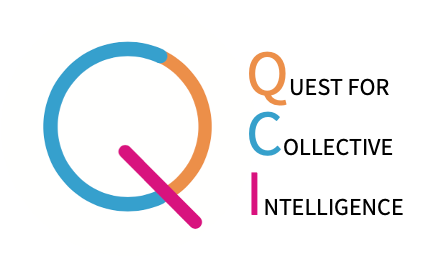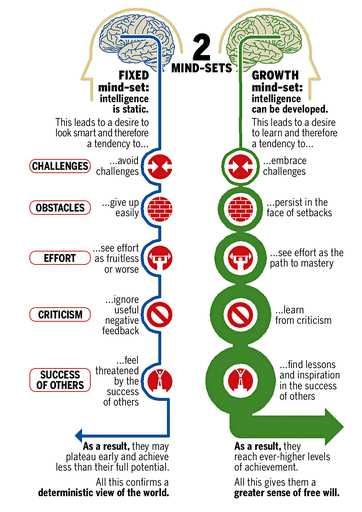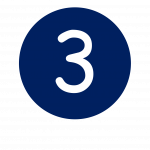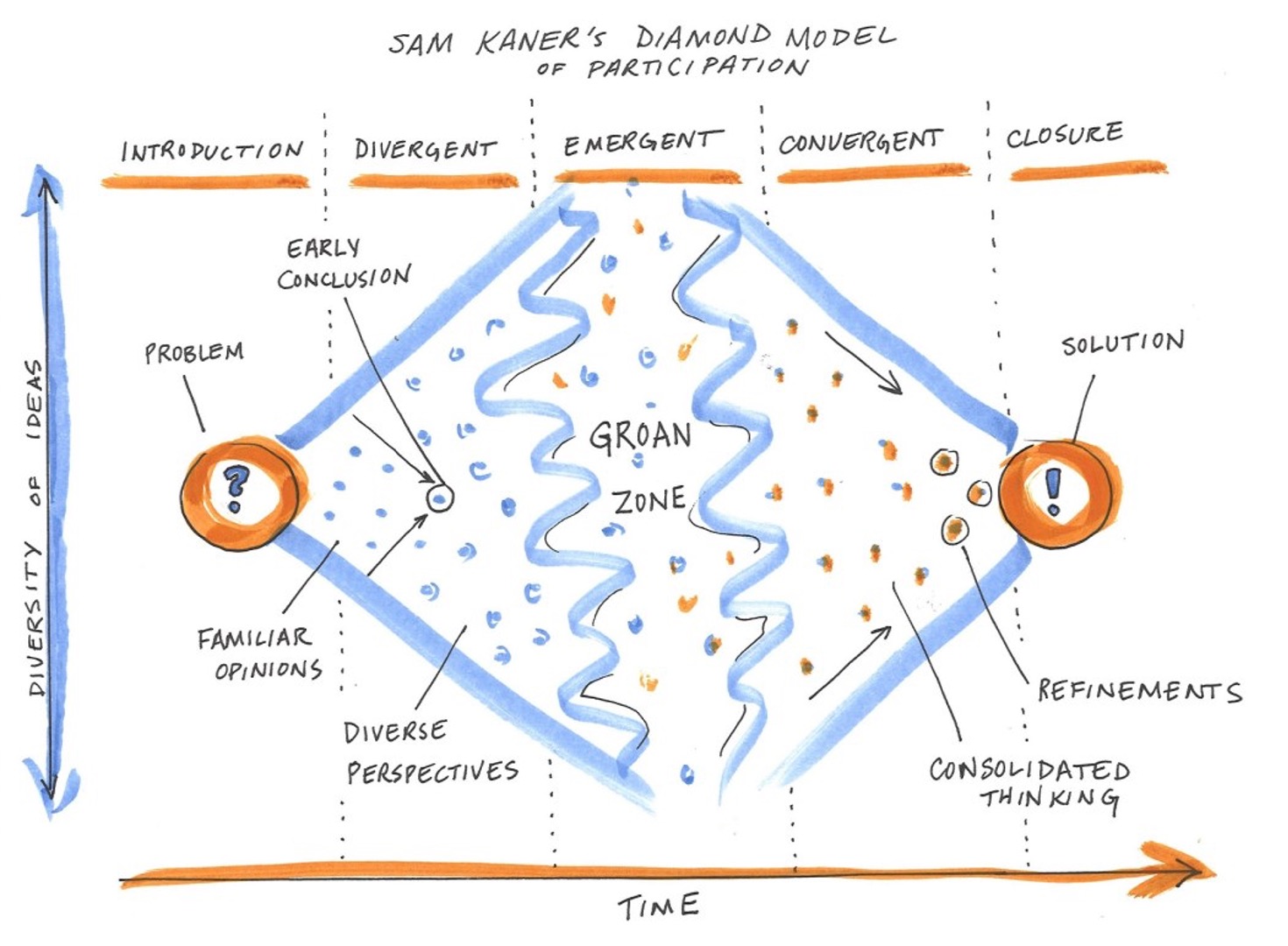The Mindset, Skills and Practices of Collective Group Intelligence

The changing context for groups and teams

"A decade ago, the business world was abuzz with talk of teams. It was the way to get things done in the organization of the future. We are now in the future, and teams (at least as we knew them then) are becoming a thing of the past."
Glenda Eoyang, "Teams: yes we CAAN"; March 2013
If we were running this program 20 years ago, we probably wouldn’t have been talking about Collective Intelligence. Instead we might have talked about Tuckman's five stages of team development (Forming, Storming, Norming, Performing, Mourning) - as a process that occurred over a period of weeks, months and years. In today’s fast-moving world, however, organisations simply don’t have time to wait months for teams to get to high-performing. Moreover, in an environment where rules, goals and boundaries are constantly shifting, many of the challenges businesses face cannot be solved by existing teams - instead requiring ad-hoc groups to come together and get to the high-performing stage within a single meeting or a short space of time. Componding difficulty even further is the fact that the challenges presented by an age of disruption are increasingly complex; they resist linear thinking or analysis and have no easy answers. To meet the challenge of our times, therefore, groups of all sizes need to develop the capacity for Collective Intelligence - by learning to think, feel and act as a cohesive whole, in as short a time as possible.
The shifting role of leadership: from “hero” to “host”
In her seminal article, Leadership in an Age of Complexity, the author Margaret Wheatley talks about the need for a change in our view of leadership, from hero to host. Traditionally, and still unconsciously, many of us think of leaders as "Heroes": who are smarter, work harder, and achieve more than other team members, and beat the opposition. In an increasingly complex, dynamic and interconnected world, however, this heroic view of leadership focused on individual contribution is largely outdated. Instead, we need to view the core role of leadership as a ‘hosting’ activity – drawing people together and facilitating high quality, productive dialogue around a complex, shared challenge. In other words, developing the capacity for Collective Group Intelligence.
During the Quest for Collective Intelligence event you will be immersed in a series of team challenges that will test the ability of your group to develop the capacity for Collective Intelligence, with different individuals able to practice the role of facilitator-leader at different times during the day. The fast-paced nature of the experience means there will not be time to fully explain the mindset, skills and practices of Collective Intelligence on the day itself. Take the time to read the briefing below, therefore, as it contains useful information that will help your team to perform better on the day, as well as back at the workplace.
MINDSET: Collective Group Intelligence requires a Growth, not a Fixed mindset
At the most fundamental level, Collective Group Intelligence requires a Growth, rather than a Fixed mindset. There are two ways of looking at human traits like intelligence and personality. One is to see them as carved in stone, unable to be changed. Known as a fixed mindset, this often leads to extreme fear of failure and mistakes. When working in groups it leads to an obsession with preserving status and looking good. As a result individuals become resistant to change and unable to shift their original viewpoint. This is where our reactive tendencies come in (which we will be exploring at the event). Collaboration ends up suffering as a result.
Alternatively, however, we can view intelligence and personality as qualities that grow and develop over time. This way of thinking — a growth mindset— is associated with a willingness to tackle challenges, a passion for learning, and greater achievement. We realise that the collective wisdom of the group is more than the sum of its parts, and therefore that we have only a part of the solution. The challenge is then to optimise how we work together, in order to foster synergy between the diversity of strengths in the group . As a result we become more open and willing to be vulnerable with each other, as we engage in mutual feedback and learning. This creates a virtuous circle that continuously improves the level of collaboration in any group.

SKILLS: The Head, Heart and Hand of Collective Intelligence
Collective Group Intelligence requires developing individual and collective capability in three areas: mental, people and task agility. We call these three skills the head, heart and hand of Collective Intelligence, respectively.
HEAD - Balancing advocacy with inquiry
When confronted with a complex challenge, the aim is to leverage the collective wisdom of the whole group. This involves creating an environment of conversational turn-taking, where the perspective of each and every group member is understood and taken into consideration before deciding and acting. To support this, individuals need to be capable of balancing effective advocacy with open inquiry

HEART - Open connection and feedback
As a group works together on a complex challenge, it is likely that interpersonal issues will arise between its members. In order to continuously improve collaboration, people need to have enough connection and courage to practice Radical Candor with each other - where tough messages are not understated, avoided, nor delivered in an aggressive way, but instead surfaced directly with care and compassion.

HAND - Working with agile group process
With simpler tasks a group can structure its agenda up front and follow it quite rigidly, meaning people can focus exclusively on the task at hand - without paying attention to how the group is working together. More complex challenges, however, require the whole group to "get on to the balcony" at repeated intervals throughout a meeting, to review how the group is working together and restructure activity accordingly.

IN PRACTICE: Distinguishing between Workgroup and Team functioning
In the business world, the words “group” and “team” often seem interchangeable, but they actually represent two fundamentally distinct modes of functioning, as shown below:


For each mode of functioning the aims and approaches for developing Connected Group Intelligence are different:
- For workgroups, most of the work actually happens when people are away from each other. The priority here is to bring the workgroup together periodically to review strategy, develop a collective view on how individuals are getting on and adapt individual work tasks and processes accordingly. This is equally true, whether you are an agile development "team", meeting to co-ordinate workflows across a variety of individual tasks - or the board of an organisation, meeting to review and manage day-to-day operations.
- For teams, however, the goal is to support collective problem-solving and innovation. Whether you are an executive team planning organisational transformation or a develpment team working on a high priority team initiative, the emphasis here is on designing and facilitating processes that support collective exploration, ideation, planning and implementation
For each form of group work there are a whole host of processes and practices that support Collective Group Intelligence. In this module we will focus on just two: Running an effective stand-up meeting (for workgroups) and Designing collective innovation (for teams)
PRACTICE #1: Running an effective stand-up meeting (for workgroups)
A stand-up meeting is a short recurring meeting between a work group that is held while standing. The aim is to give groups a focused way to get a collective view on what has been happening across the group, align around changes in the business and the strategy, plan daily work accordingly and remove blockers. Whilst it originated in agile software development, the fast-changing nature of work today means it is relevant for teams from any industry or discipline. Holding a short stand-up meeting provides a fresh and most of all effective alternative to typical round-table meetings that are often dreaded by a large proportion of people in organisations today.
The agenda of a stand-up meeting is designed to be short, and — ideally — it’s baked deeply into the regular work processes of the organisation. Everyone arrives at a certain time, the standup begins at a certain time, and the standup lasts 15 minutes or less (even 5 or 10 minutes is fine). In terms of process, there are two typical ways of running a stand-up meeting: focusing on the people, or focusing on the process:
- When focusing on the people, each person takes it in turn to share their update with the group in turn
- When focusing on the process, the facilitator/ leader goes through each of the group's objectives in turn - with each appropriate person providing an update, in turn

Firstly, team members check in on their individual progress. Whether focusing on process or people, each team member needs to touch on the following topics:
- What has already been done?
- What remains to be done?
- What blockers am I currently facing?

Once each member of the group has provided an update in line with the content described above, the group reviews its objectives, to group needs to reviews its objectives to check if they are still valid or note whether they have changed. If a leader or facilitator has privileged information about shifting strategy or goals, they should share it at this point with the group.

Finally, the group needs to review what people are working on and collaboration proceses and adapt if necessary, in order to accommodate any changes to goals or strategy, as well as to tackle any blockers team members are encountering.
PRACTICE #2: Designing collective innovation (for teams)
Teams facing complex innovation challenges need to proactively manage the group's dialogue through a sequence of divergent thinking, synthesis and convergent thinking. Sam Kaner's Diamond Model of Participatory Decision-Making visualises collective innovation in groups as a five stage process, with different requirements for success at each stage:

I) INTRODUCTION
1. Make sure the group has a shared understanding of the brief. What are we trying to achieve together?
2. Divide your time up into sequenced phases of discussion, in line with your objectives and the model above. Think about how best to structure each phase, in terms of group process
3. Provide a couple of minutes of silent reflection for each team member to pull together their thinking and ideas before starting
II) DIVERGENT
4. Go round the group one-by-one, allowing each member to briefly share their perspectives on the problem and potential solutions (do not allow people to interrupt this process)
5. Reflect as a whole group - what common themes emerged? What areas of difference? What ideas merit further discussion?
6. Make sure everyone has equal voice on the team. Pull out the perspectives of quieter people on the group
III) EMERGENT
7. Pause and go round the group one-by-one. How do we feel about progress to date? What do we each feel is the most interesting way forward?
8. Identify and harvest common themes and areas of similarity; surface and explore areas of difference
9. Stay and become comfortable with any discomfort. On the other hand, don't let conversation become too heated
10. Evaluate ideas for potential and intrigue - don't introduce criticality too quickly
IV) CONVERGENT
11. Consolidate what has been agreed; focus conversation down to the few outstanding questions that need resolving
12. Begin thinking about implementation and action planning. How will we get this done and work together? Who needs to do what?
13. As you bring in more detailed thinking and consolidate your plan, check your thinking for mistakes, risks and potential pitfalls.
V) CLOSURE
14. Make sure to write down what has been agreed and who will do what, when
15. Also make sure to schedule a future retrospective to review performance, reflect on what has been achieved and consolidate learnings
